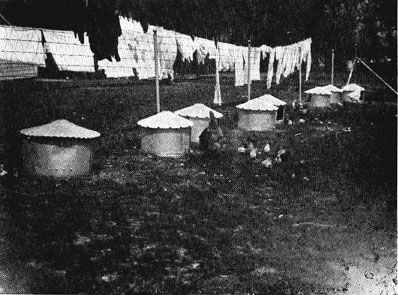![]()

Cattle Judging at Dannebrog, Nebr. & Omaha combine with the roads previously named to cover that section with a perfect network of rails. The Burlington's Billings line to the northwest, and the Union Pacific's Gering extension from North Platte, have opened up a section that is full of possibilities for the homeseeker and investor. From Grand Island east to the Missouri river one may hardly get away from the sound of the "iron horse." West of Grand Island the railroad facilities are not so good, but they are adequate to the imperative needs of the country. The Northwestern's line to the Black Hills traverses the northern and northwestern section of the state. The St. Joseph & Grand Island Road, in combination with the Union Pacific, affords adequate transportation facilities to a rich section of the state. The total mileage of operated railroad in Nebraska is 8,331.99, divided as follows: Chicago, St. Paul, Minneapolis & Omaha, 375.66; Chicago & Northwestern, 1,306.29; Chicago, Rock Island & Pacific, 308.30; Chicago, Burlington & Quincy, 3,601.16; St. Joseph & Grand Island, 131.62; Missouri Pacific, 483.93; Union Pacific, 2,104.60; Omaha Bridge & Terminal, 17.57: Missouri Valley Railway & Bridge Co., 2.86. |
![]()

A Little Side Line (and Clothesline) on a Nebraska Farm |
![]()
 |
 |
 |
© 2002 for the NEGenWeb Project by Pam Rietsch, Ted & Carole Miller